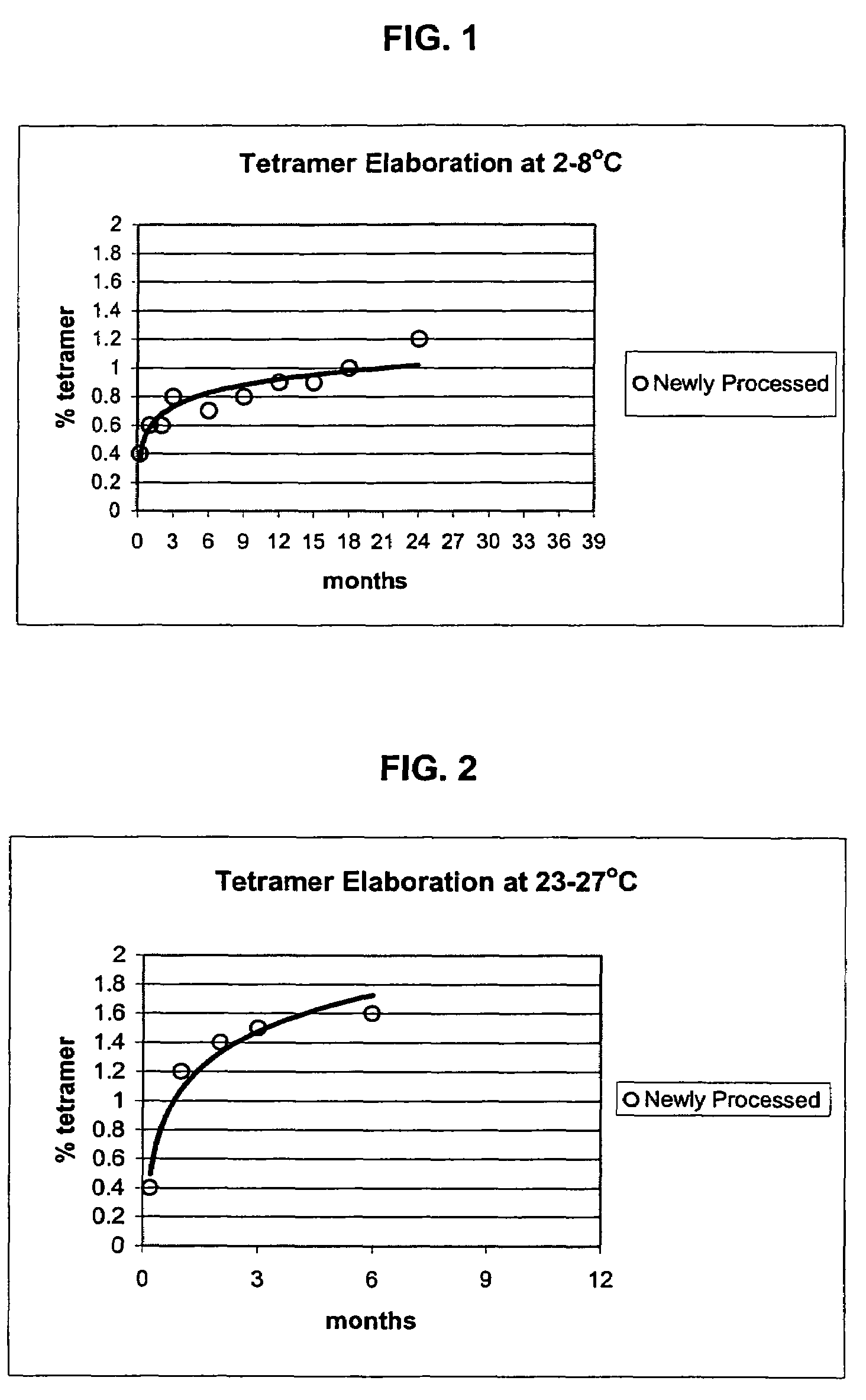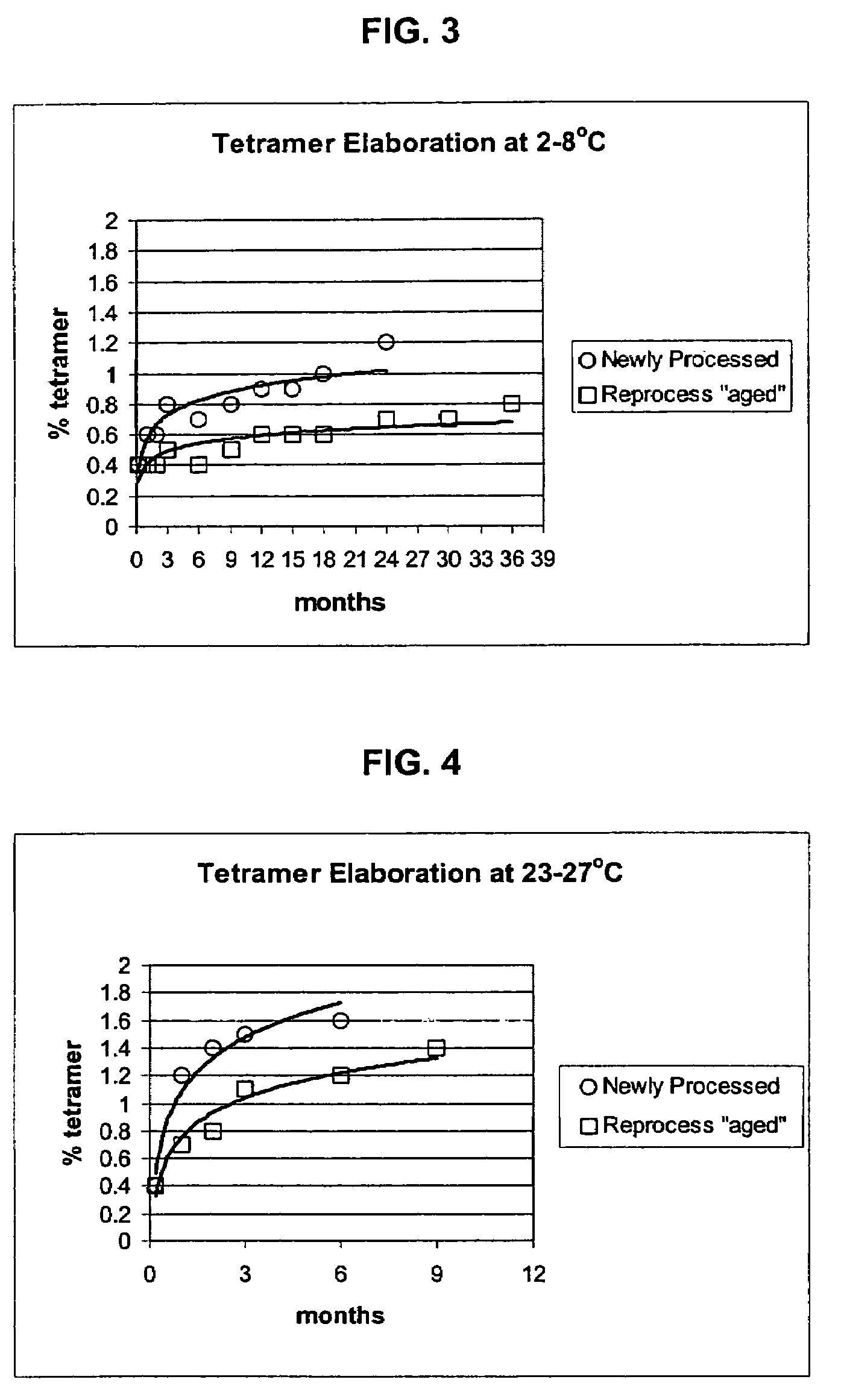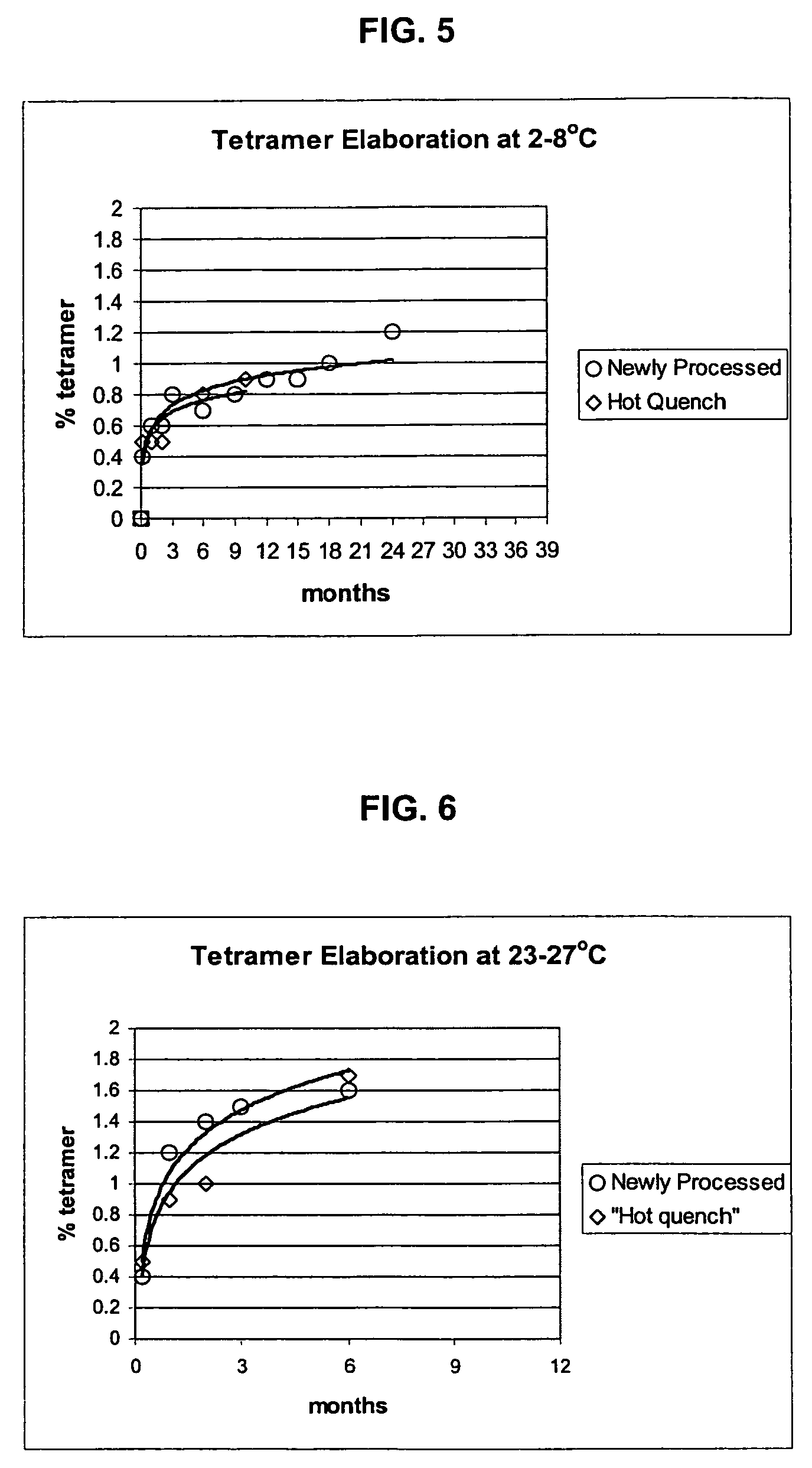Polymerized hemoglobin solutions having reduced amounts of tetramer and method for preparing
a technology of tetramer and hemoglobin, which is applied in the field of stabilized oxygen carrying solutions, can solve the problems of reduced kidney performance, limited shelf life of products, and still produce substantial renal dysfunction
- Summary
- Abstract
- Description
- Claims
- Application Information
AI Technical Summary
Benefits of technology
Problems solved by technology
Method used
Image
Examples
example 1
Cell Aspiration and Filtration
[0088]Referring now to FIG. 11, donor bags 20 of outdated blood (whole blood or packed red blood cells) are situated in a suitable aseptic aspiration apparatus 22. A needle in the aspiration apparatus punctures the donor bag, introduces about 150 ml of a 1% (w / v) aqueous sodium chloride solution and aspirates the outdated blood from the donor bag under reduced pressure or vacuum. The aspirated blood is passed through leukocyte adsorption depth filter 24 or alternatively through two 5μ depth filters in series 26. As the blood passes through the filters, leukocytes are removed from the blood. Typically, about 225 units of outdated whole blood are aspirated, filtered and subsequently transferred to Tank 1 as shown in FIG. 11. The filters are then rinsed with about 75 liters of a 1% (w / v) aqueous sodium chloride solution.
example 2
[0089]Prior to the introduction of the blood into Tank 1, Tank 1 is charged with about 40-50 L of a 1% aqueous sodium chloride solution. After all 225 units of outdated whole blood have been aspirated, filtered and transferred, and the filters have been rinsed, the tank contains about 365-395 liters of a 4% total hemoglobin solution. During the aspiration and filtering steps, Tank 1 is maintained at a reduced pressure, i.e., a vacuum of 20-28 inches Hg. Once all the outdated blood has been transferred to Tank 1, the vacuum is switched off and carbon monoxide is introduced into the tank so that the tank contains an atmosphere of carbon monoxide.
[0090]Tank 1 is coupled to a 0.65μ tangential flow filter 28 as shown in FIG. 11. The initial charge of 365-395 liters of 4% total hemoglobin solution is concentrated to approximately 215-225 L of a 7% total hemoglobin solution by microfiltration through the tangential flow filter. The pH of the hemoglobin solution at this p...
example 3
Optional Heat Treatment For Viral Reduction and Stromal Precipitation
[0092]The resulting solution of stroma-free hemoglobin is then heat treated in Tank 2 at a temperature of about 60-62° C. over a period of about 10 hours. During this time, the solution is moderately agitated. As the solution is heated and passes a temperature of about 55° C., a precipitate forms.
PUM
 Login to View More
Login to View More Abstract
Description
Claims
Application Information
 Login to View More
Login to View More - R&D
- Intellectual Property
- Life Sciences
- Materials
- Tech Scout
- Unparalleled Data Quality
- Higher Quality Content
- 60% Fewer Hallucinations
Browse by: Latest US Patents, China's latest patents, Technical Efficacy Thesaurus, Application Domain, Technology Topic, Popular Technical Reports.
© 2025 PatSnap. All rights reserved.Legal|Privacy policy|Modern Slavery Act Transparency Statement|Sitemap|About US| Contact US: help@patsnap.com



